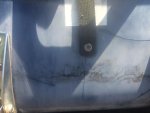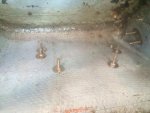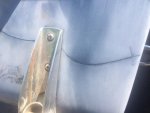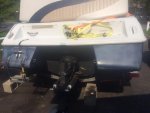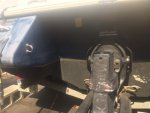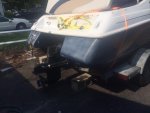MikeDobbs
Petty Officer 1st Class
- Joined
- May 8, 2015
- Messages
- 205
Hey everyone,
I'm trying to determine how to best deal with a series of cracks in my gelcoat. I think these are stress induced; as you will see in the pictures, they appear around the fitting securing the swim ladder to the boat.
The fiberglass seems to be intact underneath the gelcoat- it's as if the gelcoat simply split and left a gap where you can see the glass underneath.
To complicate the situation, I can see a very small amount of water "weeping" through the hull from the inside at the location of the two lower screws securing the ladder.
I'd very much appreciate any help or suggestions as to how to best address these cracks. I'm not concerned with aesthetics so much, I just don't want to have this develop into a serious leak that may threaten the boat at some point.
Thanks!
I'm trying to determine how to best deal with a series of cracks in my gelcoat. I think these are stress induced; as you will see in the pictures, they appear around the fitting securing the swim ladder to the boat.
The fiberglass seems to be intact underneath the gelcoat- it's as if the gelcoat simply split and left a gap where you can see the glass underneath.
To complicate the situation, I can see a very small amount of water "weeping" through the hull from the inside at the location of the two lower screws securing the ladder.
I'd very much appreciate any help or suggestions as to how to best address these cracks. I'm not concerned with aesthetics so much, I just don't want to have this develop into a serious leak that may threaten the boat at some point.
Thanks!




















